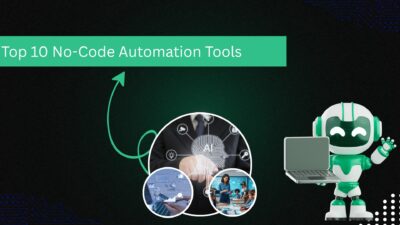Imagine a future where software doesn’t just respond to commands—it acts on its own, learns as it goes, and makes intelligent decisions to complete tasks without constant oversight. That future isn’t far away. In fact, it’s already taking shape, thanks to something called Agentic AI.
In 2025, the workplace is changing rapidly—and at the center of this transformation is Agentic AI. With businesses striving to stay ahead in a digital-first world, understanding what Agentic AI is and how it’s revolutionizing jobs isn’t just helpful; it’s essential.
Let’s break it down to see how Agentic AI is reshaping the very nature of work as we know it.
What Is Agentic AI?
Before diving into its impact, let’s first unpack the term “Agentic AI.”
Agentic AI refers to intelligent software agents or systems that operate with a degree of autonomy. Unlike traditional AI tools that need human direction at every step, Agentic AI can make decisions, set goals, and perform tasks proactively—almost like a human co-worker.
Think of it like a digital teammate who understands your work style, anticipates needs, and takes initiative to get things done—even while you’re asleep.
What’s the secret behind it? Agentic AI is built on large language models (like OpenAI’s GPT or Google’s Gemini), combined with tools like APIs, memory storage, and real-time data processing. The result? An AI agent that doesn’t just react but plans, learns, and evolves.
Why Agentic AI Matters in 2025
If you’ve been following trends in automation, you know AI has already changed the landscape in industries like customer service, finance, and healthcare. But Agentic AI takes it up a notch.
Here’s why its emergence in 2025 is such a game-changer:
– It handles complex workflows without constant human input.
– It reduces the need for manual, repetitive tasks.
– It empowers humans to focus on creative, strategic, and interpersonal roles.
– It moves us from “tool-using AI” to collaborating with “digital co-workers.”
Sounds impressive, right? Let’s explore some real-life applications to understand just how impactful this technology is becoming.
How Agentic AI Is Redefining the Workplace
Workforce transformation isn’t about robots replacing humans. It’s about creating a synergy between algorithms and people. Here’s how Agentic AI contributes to that idea.
Automating Repetitive Tasks
One of the most immediate benefits of Agentic AI is its ability to recognize and automate repetitive workflows across various departments.
HR & Recruitment
Picture this: an intelligent agent that scans resumes, schedules interviews, manages follow-up emails, and even answers candidate questions—all without human micromanagement. Recruiters can now focus more on relationship-building and culture fit assessments rather than getting bogged down with admin work.
Finance & Accounting
Agentic AI can manage invoicing, track expenses, flag anomalies in transactions, and even forecast budgets. It doesn’t replace accountants—it enhances their capacity to make informed decisions faster.
Smarter Project Management
Managing a project involves juggling timelines, resources, milestones, and people. With Agentic AI, project managers now have intelligent assistants that keep everything on track.
These AI-driven agents can:
– Monitor project progress in real-time
– Reassign tasks based on team bandwidth
– Send automatic reminders or escalate issues when needed
– Generate reports without being asked
This type of support means fewer oversights, better collaboration, and enhanced productivity.
Personalized Support at Scale
Customer support has always been a challenging area to scale without letting quality drop. Traditionally, only high-value clients get the concierge treatment. But Agentic AI is changing that.
Imagine an AI agent that:
– Understands your customer’s past interactions
– Adapts its tone and style to match individual preferences
– Solves complex problems by navigating through interconnected systems
– Escalates to a human only when necessary
This kind of experience isn’t just efficient—it feels deeply personal, even when handled by artificial intelligence.
Learning & Development On Demand
In 2025, learning systems powered by Agentic AI can do more than just recommend courses. They actively understand each employee’s career path, work habits, and gaps in knowledge.
Take Jane, a marketing executive, for example. Her AI mentor notices she’s using advanced analytics tools more frequently but hasn’t taken formal training. It nudges her toward personalized micro-learning modules, schedules reminders to check in on progress, and tracks how her performance improves post-learning.
It’s like a career coach built into your workflow—with zero extra effort required.
Agentic AI in Creative Fields
You might think AI can’t be creative, but Agentic AI is starting to challenge that notion. In marketing, design, and content creation, Agentic AI acts more like a brainstorming partner than a cold machine.
For example, a copywriter working on a campaign might ask their AI partner to draft a few headline variations, analyze audience engagement patterns, or even propose distribution strategies. It’s not about replacing creative talent—it’s about supercharging it.
Bridging Global Teams
Remote and hybrid work aren’t going anywhere. As companies become more global, coordination gets trickier. Here’s where Agentic AI plays a massive role.
These digital agents can:
– Translate languages in real-time
– Sync up calendars across time zones
– Act as knowledge bases that standardize operations worldwide
– Monitor and manage workflows without bureaucracy delays
In essence, they remove friction from distributed teamwork—making global collaboration feel local.
The Human Side of Agentic AI
Now, with all this talk of autonomy and automation, it’s natural to wonder: where do humans fit in?
The answer is simple—we fit right at the center.
Agentic AI isn’t here


